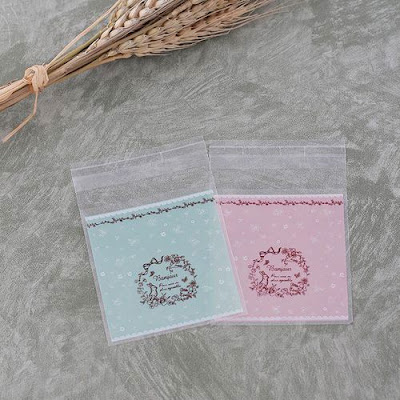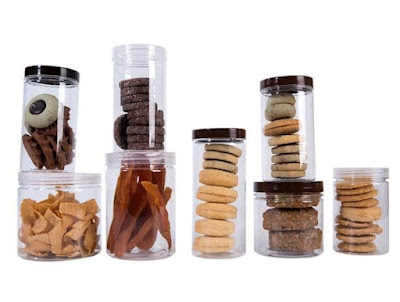Glass and Plastic
We are very used to two materials when it comes to packaging of food: Glass and Plastic. Both are extraordinary materials. Glass is already known to mankind since 7000 BC, plastic since 1940.
The fact that a lot of food is packed in plastic nowadays means that packaging in plastic seems to have some advantages over glass.
The most important advantages are that plastic is cheap and light. That plastic doesn't break and is rather flexible is another important factor. That many plastics are transparent is probably also one of the main reasons that it was considered as an alternative to glass.
Glass Food Packaging/Storage Containers
Walk into a supermarket and see a whole range of plastic food packagings. At the soft drink section you see a lot of plastic bottles and many pastes, sauces and all kind of chips and other dried foods are packed in plastic. Besides you see many containers to keep food in, like boxes for in the freezer and boxes to store left overs.
Glass is also used much as a packaging material for food. Bottles for drinks, for conserved vegetables and fruits, tomato ketchup and other sauces, etc.
One thing which is noticeable is that glass seems to be the preferred material for long-lasting products and products which are easily to decay.
Glass vs. Plastic Packaging or Storage for Food
That glass is used for long storage of foods is logic. Glass is absolutely impermeable to gases and hence blocks the content from the oxygen in the air. Oxygen has the property that it oxidizes food and that means aging of the food. Some bacteria and fungus also need oxygen and the use of glass makes it impossible for them to grow. Glass is easy to sterilize.
Glass is also totally tasteless and it doesn't affect the taste or smell of any food packed in it. Plastic food containers do have a light or heavy smell.
What you can not see or feel are the additives which leach out of the plastic into your food. These additives range from anti-oxidants, anti-static agents, plastifiers, flame retardants, filling materials, colorants and light stabilizers, etc. Sometimes the plastic what you see is about fifty percent of the base plastic material and fifty percent of these additives.
The plastic packaging industry is of course aware of the additives and by government rules they have to diminish this leaching out of additives into the food. So they choose for additives with less mobility, special surface treatments to avoid leaching, additives which are tasteless or non-toxic where possible.
PET Plastic Food Packaging/Storage Containers
Whether non-toxic or not, these additives are leached into the food and you don't see it, so most of the time you don't know what is entering your body. The bad part is that in our modern society the government makes rules containing maximum allowable concentrations. As long as the leaching out of additives is below these values than they are accepted and may be used. The scary part of this is that by using these plastic containers, very low quantities of these additives are part of your food.
Safe according to the laws means not that there might not be any health effects. Yes-or-no discussions about some additives are going on for long times and sometimes it seems to be that some long-term effects were not known at the moments that the allowable concentrations were chosen.
Sure, some plastics, like HDPE and PET, have less additives than others but common additives like phthalates and bisphenol A, have been analyzed in the human population all over the world.
Glass doesn't contain these additives and is therefor much healthier for food packaging than plastic.
Environmental impact of glass and plastic
That we use so much plastic in our society is because it is convenient.
Glass breaks and this breakage causes loss of products and it causes wounds from cutting. Transportation of plastic packed food is cheaper since a glass packaging is heavier and the more heavy the product the higher the fuel costs. Production of plastic and the forming of products out of it is relatively cheap and easy.
Glass is recyclable and of the plastics only HDPE and PET are recyclable. New plastics which are biodegradable are developed and recycling programs try to do their best but plastic waste is piling up.
For 2010 it is estimated that we used 250 million tons of plastic and a big part of this ends up at the waste dump and in the oceans. The plastic ending up in the oceans is not just floating around. Big pieces are torn to smaller pieces and by sun and abrasion are turned in to microparticles. These microparticles have the property to attract toxic components. Unfortunately these microparticles are also consumed by the smallest living creatures in the sea and end up at the end of the food chain.
Glass production is not the cleanest production. It uses high temperatures to form glass and that consumes a lot of fuel.
Glass packaging materials have some disadvantages over plastic packaging materials. But when all the health and environmental issues are weighed together with the economical facts, then it becomes clear that glass is the only right material for food packaging and storage.













